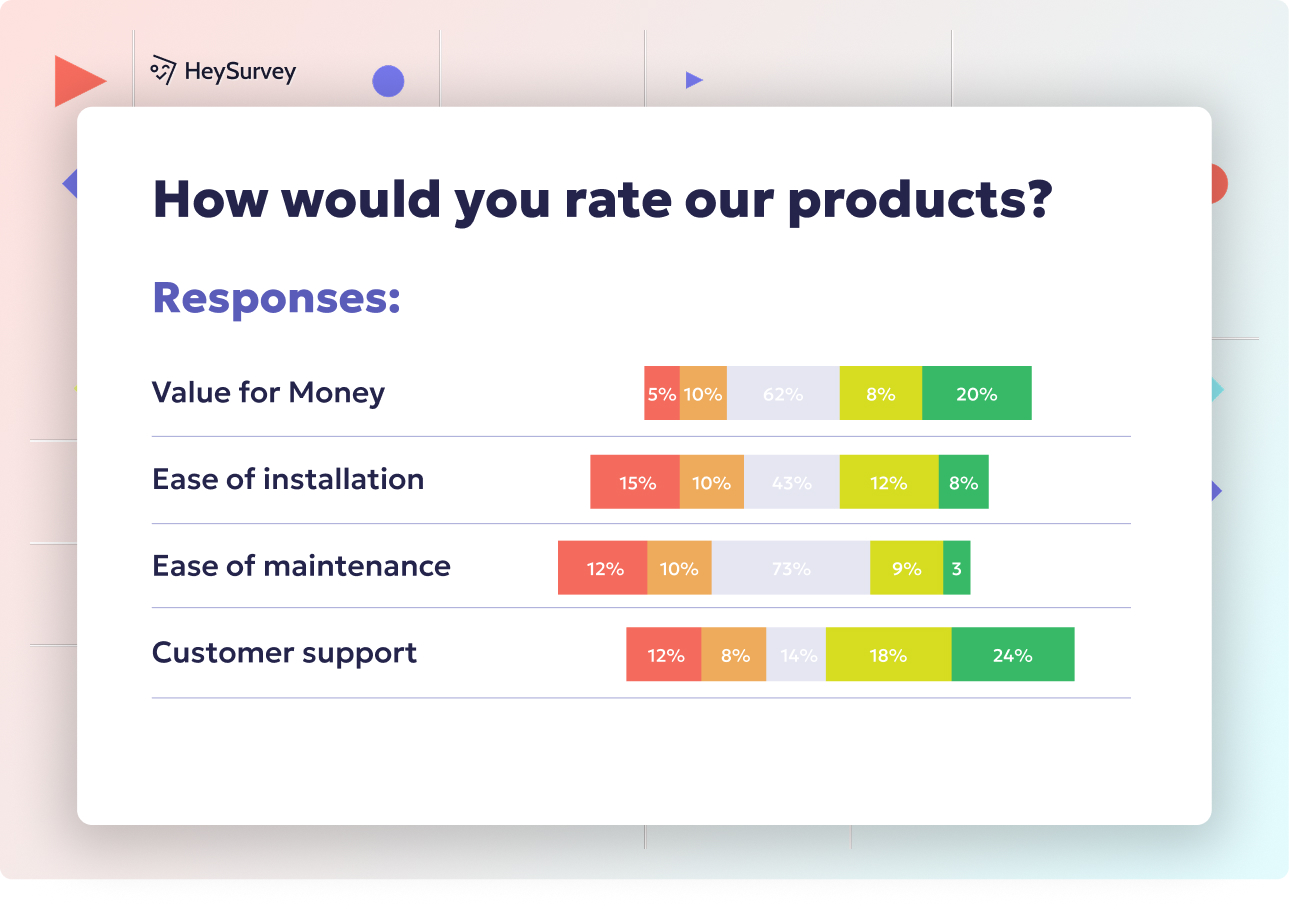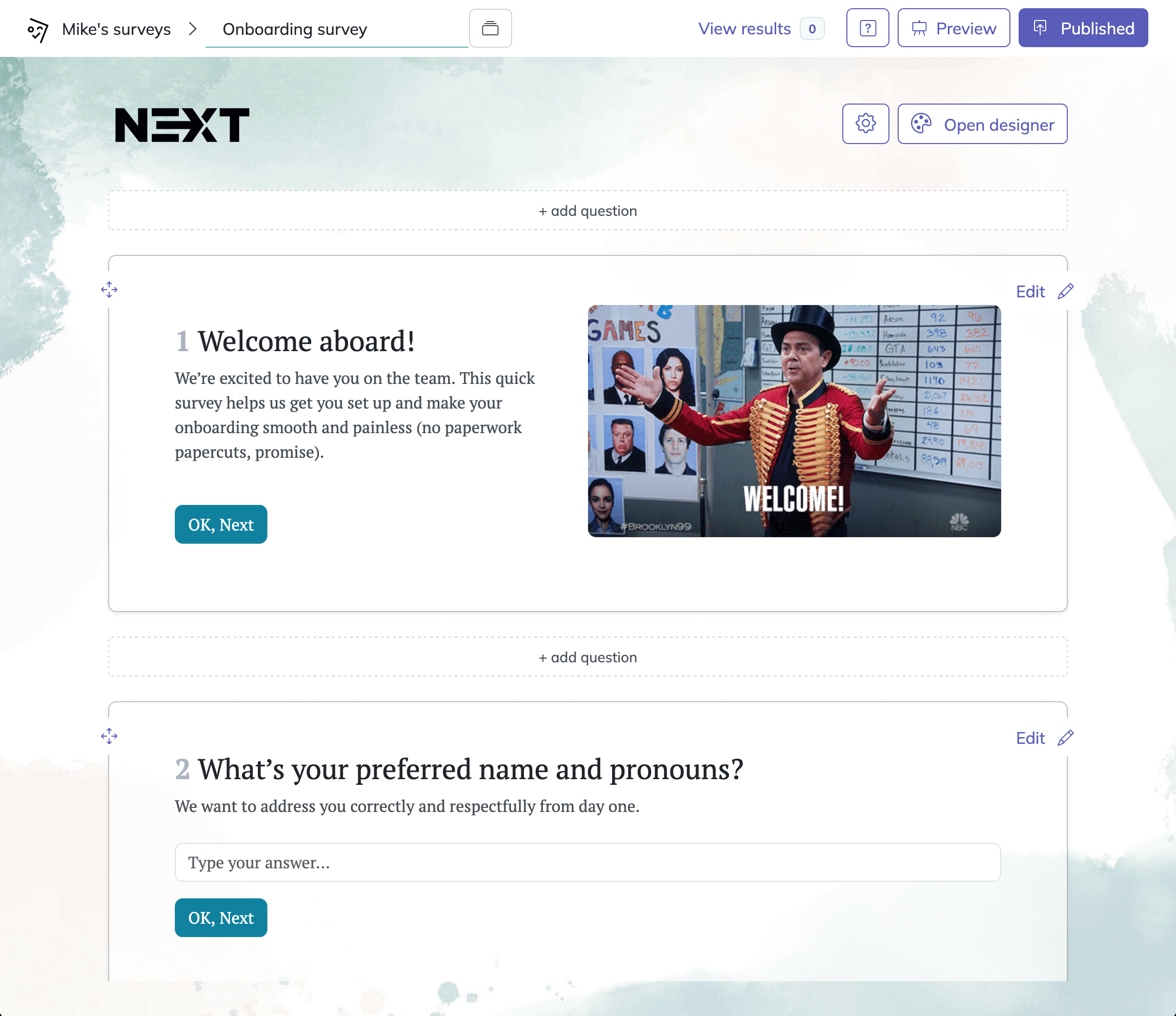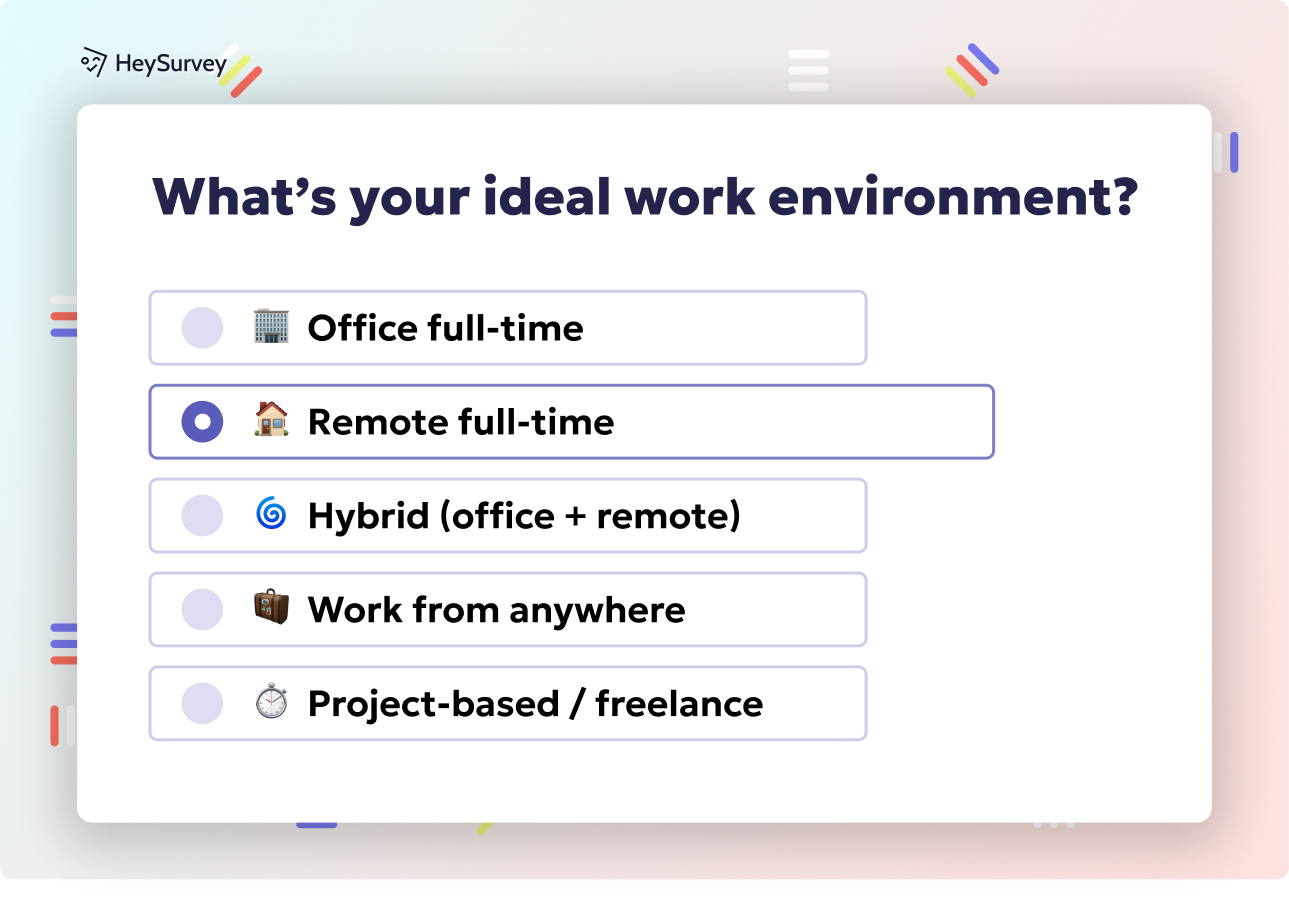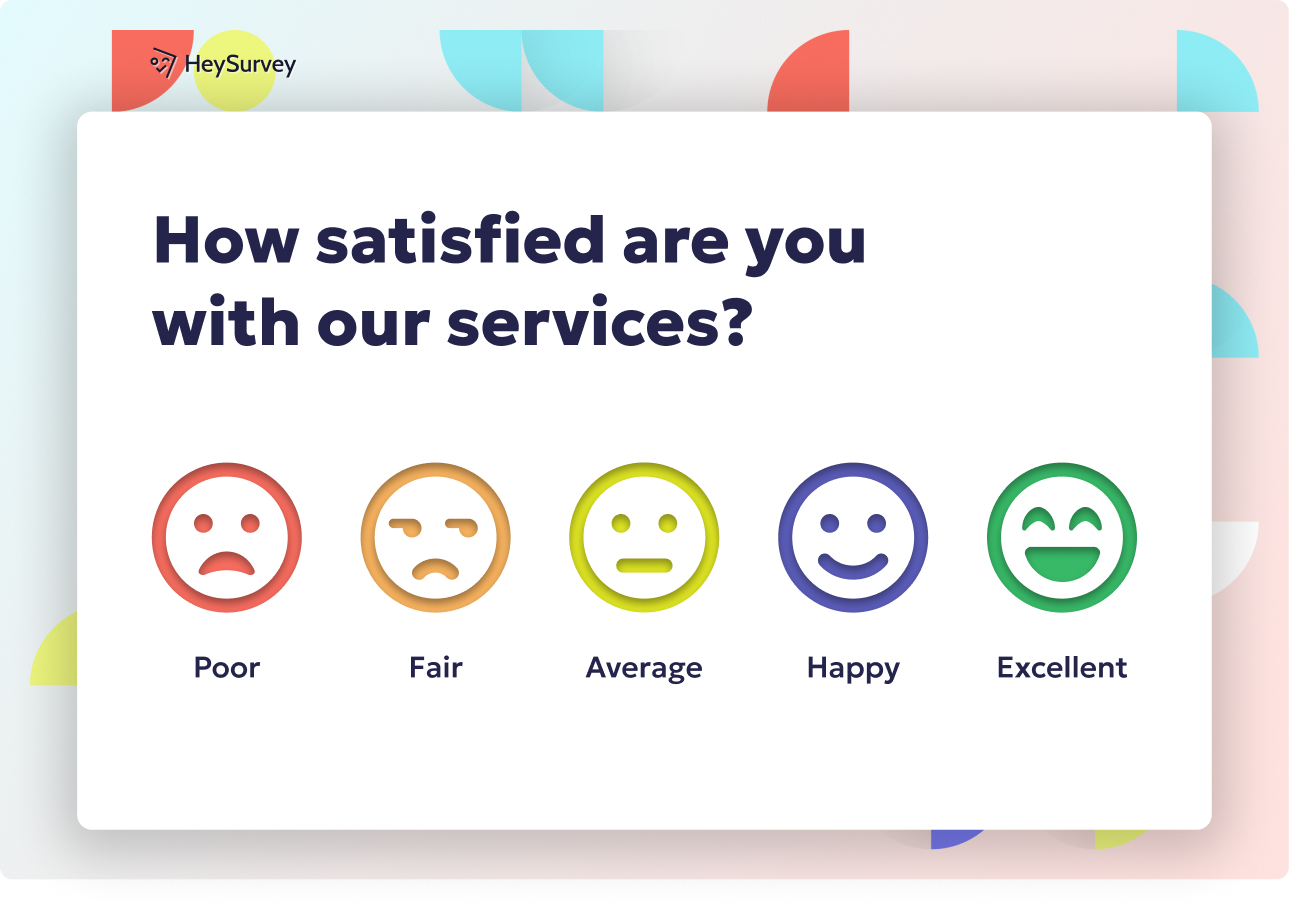29 Burnout Survey Questions PDF: Templates, Use-Cases & Tips
Explore 30 burnout survey questions PDF templates with expert tips, use-cases, and best practices to assess and prevent burnout effectively.
Burnout is sneaky—it creeps in while no one’s looking, costs organizations millions, and nudges even the brightest stars off their path. Luckily, a ready-to-download burnout survey PDF can be the secret weapon every HR leader, school counselor, and clinic manager needs in their toolkit. Templates streamline assessments and boost engagement with just a click, all while making results reliable and comparable. Here, you’ll discover copy-and-paste question sets, tips for finding your best-fit format, and playful yet practical advice for getting burnout surveys out quickly and effectively.
Employee Self-Assessment Burnout Survey (Printable PDF Template)
Why & When to Use
Quarterly check-ins aren’t just for performance reviews anymore. In the modern workplace, stress and fatigue build up faster than most coffee runs. For this reason, a printable burnout self-assessment is crucial—think of it as a mental health pitstop for your team. These surveys are perfect during onboarding, after big projects, or whenever you notice a few more yawns than usual at meetings.
By encouraging self-reflection, employees spot stress symptoms before productivity nosedives. Not only does this foster wellbeing, but it also signals to staff that their health is a true priority. Rolling these out before busy seasons can spare you a rash of sick days later.
Key context clues that scream “it’s time for a burnout survey”:
- Sudden drop in engagement or team energy.
- Major organizational changes, like a new software platform.
- Employees struggling to meet deadlines or forgetting basic tasks.
Whether for an annual wellness initiative or a spontaneous morale check, this PDF template is all about prompting honest feedback—and it saves managers hours crafting questions from scratch.
5 Sample Questions
How often do you feel emotionally drained after a typical workday?
In the past month, how frequently have you struggled to start tasks you usually enjoy?
Rate your sense of accomplishment at work on a scale of 1–10.
How often do you experience physical fatigue (headaches, sleep issues) related to your job?
Do you feel you have enough support and resources to perform your duties effectively?
These questions quickly spotlight red flags and open the door for needed conversations—without anyone having to schedule yet another meeting.
The Maslach Burnout Inventory (MBI) is a widely used tool for assessing burnout across various professions, measuring emotional exhaustion, depersonalization, and reduced personal accomplishment. (mindgarden.com)

Creating a burnout survey with HeySurvey is easy, even if you’re new to the platform. Here’s how you can get your survey up and running in just a few simple steps—and we’ve thrown in some bonus tips to take your survey from “meh” to “marvelous.”
Step 1: Create a New Survey
Start by logging into HeySurvey or jump right in without an account if you want to test things out first. Click on “Create New Survey” and choose whether you want to:
- Start from scratch with an Empty Sheet.
- Pick a pre-built burnout survey template for a quick launch.
- Or type your questions in plain text and let HeySurvey do the magic.
Once you pick your path, give your survey an internal name (just for you) and get ready to build.
Step 2: Add Questions
Now here’s where the fun begins. Hit the “Add Question” button to start populating your survey with burnout-related questions. You’ll see options like:
- Multiple choice (great for ticking boxes or scales).
- Text input (perfect for detailed feedback).
- Likert scales (hello, “Strongly agree” to “Strongly disagree” vibes).
Customize each question by typing your burnout prompts, marking questions as required if needed, and even adding descriptions or images to keep respondents engaged. Don’t forget, you can duplicate questions or rearrange them to keep your survey flowing nicely.
Step 3: Publish Survey
When your questions look good and you’re ready to roll, click “Preview” to see the survey as your respondents will. Fancy a last-minute tweak? You’re still in the driver’s seat with the designer sidebar. Happy with the look and feel? Hit the “Publish” button to generate a sharable link. Keep in mind, publishing requires a HeySurvey account so you can track responses and analyze results later.
Bonus Steps to Make It Shine
- Apply Branding: Add your company or school logo to the survey header for a professional touch.
- Define Settings: Set start/end dates, limit the number of responses, or create a redirect URL for after the survey is completed.
- Skip into Branches: Use branching logic to customize question flow based on previous answers—perfect for diving deeper into stress triggers or skipping irrelevant sections.
Ready to get started? Click the button below to open a burnout survey template and begin customizing it in HeySurvey!
Manager 360° Burnout Observation Survey
Why & When to Use
Managers are eagle-eyed for missed deadlines, but even the sharpest leader sometimes misses the slow-cooking stew of team-wide burnout. Enter the Manager 360° Burnout Observation Survey—a tool that doesn’t just focus on individuals, but captures what’s happening across the whole group.
This type of survey is ideal twice a year or whenever you spot a spike in voluntary resignations, increased absenteeism, or grumpy faces at the coffee machine. One of its biggest superpowers: triangulating burnout signs by combining feedback from employees themselves, their peers, and management observations.
Deploying this survey lets HR teams:
- Detect hidden sources of team friction.
- Track trends in workload and morale across departments.
- See how stress might be “contagious” in a group setting.
By painting a multilayered portrait of burnout, organizations can steer support where it’s needed most—sometimes before anyone has reached true crisis mode.
5 Sample Questions
I notice team members expressing cynicism about company goals. (Never—Always)
Colleagues appear disengaged during meetings.
Absenteeism or tardiness has increased in my team.
Workload distribution seems fair and manageable.
Employees openly communicate stress concerns to me.
When responses start to shift from the positive end of the scale, you’ll know it’s time to get creative with solutions—or at least bring snacks to the next team meeting.
The Maslach Burnout Inventory (MBI) is a widely used tool that assesses burnout through three dimensions: emotional exhaustion, depersonalization, and personal accomplishment. (en.wikipedia.org)
Organizational Burnout Risk Audit Survey
Why & When to Use
Even the brightest culture posters can’t paper over narrow job descriptions or unclear emails. That’s why the Organizational Burnout Risk Audit Survey swoops in annually, aiming higher than individual frustrations by focusing on root causes embedded in policies, expectations, and leadership habits.
Conducting a yearly audit offers a bird’s-eye view of how your organization’s systems either fuel resilience or fan the flames of burnout. These insights justify launching wellness initiatives, adjusting benefits, or tweaking job demands—essentially saving the budget from both unnecessary spending and silent suffering.
Well-designed risk audits reveal:
- Whether recognition programs really matter (or just add emails).
- If job demands and resources are in a healthy balance.
- How much employees trust leadership to walk the talk on well-being.
This survey template, neatly packaged in PDF format, triggers discussions that shape the entire workplace—not just one department.
5 Sample Questions
Our organization recognises and rewards employees appropriately.
Job demands regularly exceed available resources.
We have clear communication about role expectations.
Leadership models healthy work-life boundaries.
Employees trust management to address wellbeing issues.
By acting on the insights from this survey, organizations can move the needle from reactive quick fixes to long-term cultural improvements—and maybe even become a “best place to work” along the way.
Work-From-Home Burnout Pulse Survey
Why & When to Use
Work-from-home burnout is as real as that “just one more episode” temptation at lunch. For remote and hybrid teams, traditional stressors are traded for tech fatigue, blurred boundaries, and the never-ending ping of notifications. A monthly pulse survey in PDF keeps tabs on these unique challenges, especially as teams toggle between in-office, remote, and virtual meetings.
What makes this survey stand out is its brevity—a handful of questions that take only a minute, so response rates stay high. Leaders can spot trends and intervene before small frustrations escalate.
A well-written pulse survey tracks:
- Difficulty unplugging after hours.
- Fading social connections and sense of belonging.
- Signs of digital overload or video call exhaustion.
Because let’s face it: if you’ve joined a video meeting in pajama bottoms, you’re not alone—and it’s worth checking if your teammates are flagging, too.
5 Sample Questions
How difficult is it to disconnect from work at the end of the day?
Rate your sense of isolation when working remotely.
Do you have a dedicated workspace free from distractions?
Video meetings leave me feeling exhausted.
I receive adequate guidance on flexible scheduling.
Every answer reveals whether your remote work culture is building resilience—or just building a queue of unopened email auto-replies.
The Maslach Burnout Inventory (MBI) is a widely used tool that assesses burnout through three dimensions: emotional exhaustion, depersonalization, and personal accomplishment. (en.wikipedia.org)
Healthcare Professional Burnout Survey
Why & When to Use
Frontline healthcare workers brave a nonstop storm—and it’s not just paperwork that piles up. Quarterly burnout surveys packed in a tidy PDF help detect compassion fatigue and moral distress, long before anyone hangs up the stethoscope. Hospitals, clinics, and emergency rooms all need sharp tools to meet accreditation and keep their staff feeling both valued and energized.
These surveys align with HR and compliance standards, making them a favorite among busy administrators and medical directors. Questionnaires go beyond basic mood-checks; they gauge emotional exhaustion, empathy levels, admin overload, and access to support systems.
Key benefits include:
- Early warning for PTSD or chronic burnout symptoms.
- Chances to compare teams, floors, and departments in data-driven ways.
- Rapid follow-up on spikes in stress after outbreak surges or major events.
Creating a safe space for doctors, nurses, and techs to be honest isn’t just nice—it’s essential for both staff and patient care outcomes.
5 Sample Questions
I feel emotionally exhausted by patient care demands.
I can maintain empathy for patients throughout my shift.
Administrative tasks interfere with my clinical duties.
I have access to mental-health resources when needed.
Staffing levels are sufficient for safe patient care.
When healthcare heroes know someone’s truly listening, it’s easier for them to keep caring for others—and themselves.
Student Academic Burnout Survey
Why & When to Use
Academic stress is a special kind of beast. For high schoolers and undergrads, burnout surveys before exams or midterms offer a lifeline. Schools and universities use these printable PDFs to uncover hidden stressors, promote retention, and flag students who might otherwise slip through the cracks.
Running these surveys mid-semester means there’s still time to pivot—like offering extra tutoring, more flexible deadlines, or a needed mental health day. They help normalize conversations about overwhelm, making self-care a campus-wide value rather than a last resort.
Common situations to deploy this survey:
- Noticeable drop in class engagement or participation.
- Increases in late assignments or missed classes.
- Campus events that pile on extra responsibility (think club fairs or finals week).
With the right questions, educators empower students to share openly and tackle burnout before it snowballs.
5 Sample Questions
I feel overwhelmed by the amount of coursework.
I can concentrate during lectures without feeling mentally exhausted.
I am sleeping less than six hours because of study demands.
I still find joy in learning new material.
Campus resources help me manage stress effectively.
It might not magically fix all-night cram sessions, but these surveys can nudge schools to step up their support where students need it most.
Post-Crisis Burnout Recovery Survey
Why & When to Use
After a seismic event—be it a merger, layoff, or global pandemic—the “new normal” hits differently for everyone. A Post-Crisis Burnout Recovery Survey sent out 30–60 days after such events can be pivotal. It’s more than a check-in; it’s a chance to see who’s bouncing back, who’s lagging, and how well organizational promises translate into real support.
This survey’s special sauce? It offers a snapshot of ongoing needs, perceptions of leadership, and the effectiveness of crisis communications. Open-ended questions also give space for genuine venting and hope-raising suggestions.
These surveys help organizations:
- Monitor readiness to ramp up work again.
- Spot lingering stress or trauma quietly affecting performance.
- Gather ideas for future support initiatives.
Bringing visibility to recovery needs keeps the organization moving forward and helps everyone find their feet again after a wobble.
5 Sample Questions
I feel the organization handled the recent crisis transparently.
My workload has returned to a sustainable level.
I believe leadership cares about employee recovery.
I still experience stress symptoms related to the crisis.
What additional support would help you recover fully?
Collecting this feedback is half the battle—the other half is showing you’re committed to acting on it.
Dos and Don’ts for Crafting & Distributing Your Burnout Survey PDF
Not all burnout surveys are created equal—nor are they always lovingly crafted. Make yours stand out by following a handful of playful, must-follow dos and don’ts to keep responses flowing and feedback meaningful.
Dos
Do keep surveys under 10 minutes to reduce fatigue.
Do combine Likert scale and open-ended questions for depth.
Do anonymize responses to boost honesty.
Do timestamp PDFs and version-control to track improvements.
Do optimize file size (<1 MB) for mobile download; include alt-text if embedding visuals.
Don’ts
Don’t ask leading or judgment-laden questions.
Don’t ignore follow-up actions—communicate results and next steps.
Following these tips means you’ll get quality feedback without burdening your respondents or IT’s inbox. A snappy, user-friendly PDF means your survey won’t end up in the recycle bin (virtual or otherwise).
A well-designed burnout survey PDF not only supports better workplace conversations, but also builds trust—one clever question at a time.
Burnout isn’t going away, but with the right surveys in your corner, you can turn it from a silent saboteur to a well-managed guest. Copy, paste, and personalize the templates above to fit your unique culture. Commit to listening, acting, and—occasionally—having a little fun along the way. Your team, students, and entire community will thank you.
Related Employee Survey Surveys

29 Essential Post Mortem Survey Questions for Project Success
Discover 25+ essential post mortem survey questions to improve projects, boost team morale, and d...

31 Change Readiness Survey Questions to Boost Your Success
Discover 25+ sample change readiness survey questions to assess attitudes, barriers, and confiden...

31 Retreat Survey Questions to Collect Actionable Feedback
Discover 26 essential retreat survey questions to gather actionable feedback before, during, and ...

